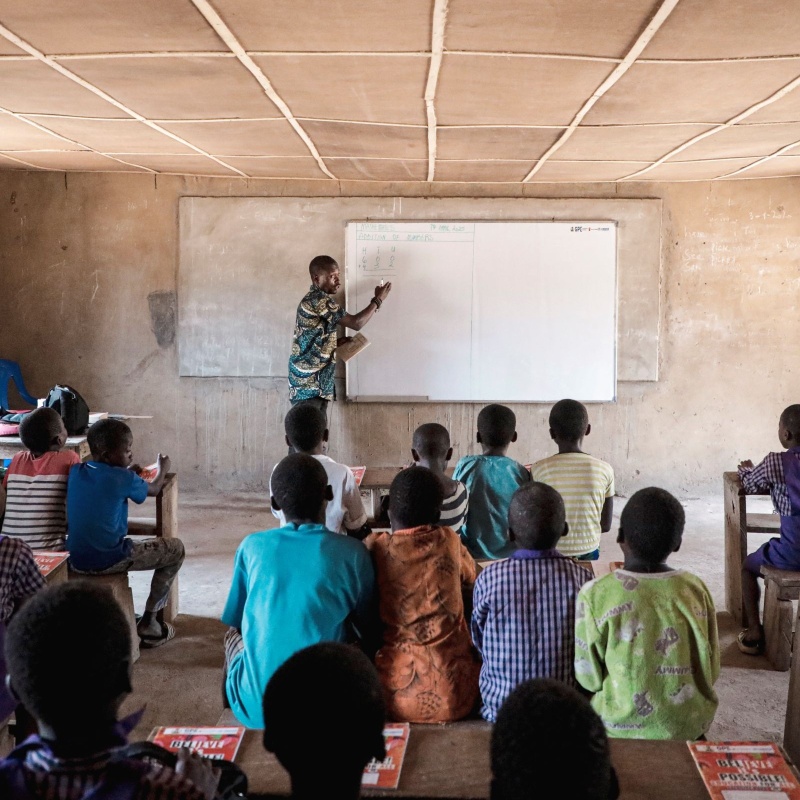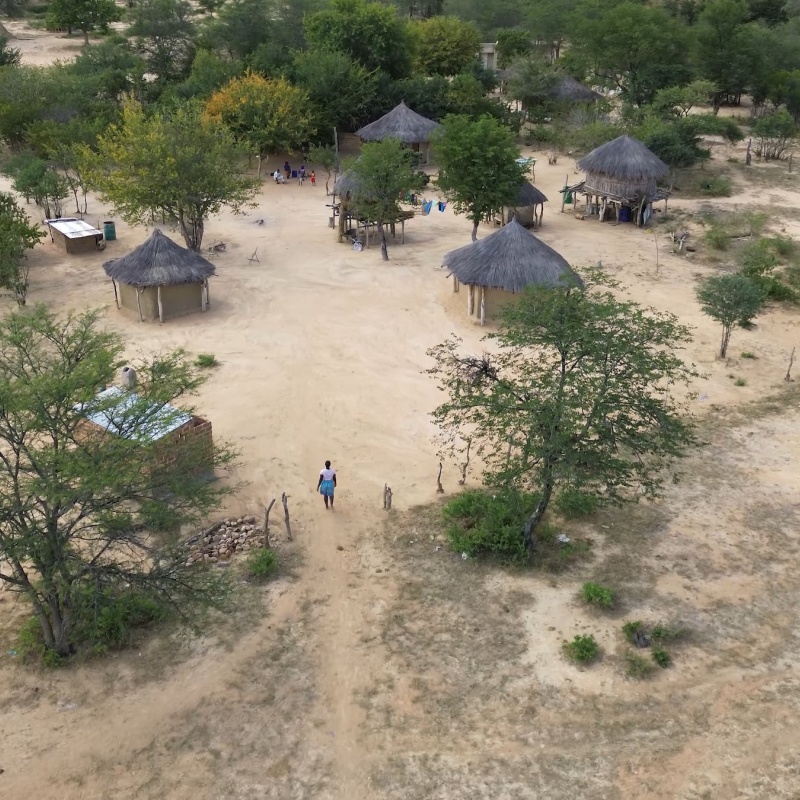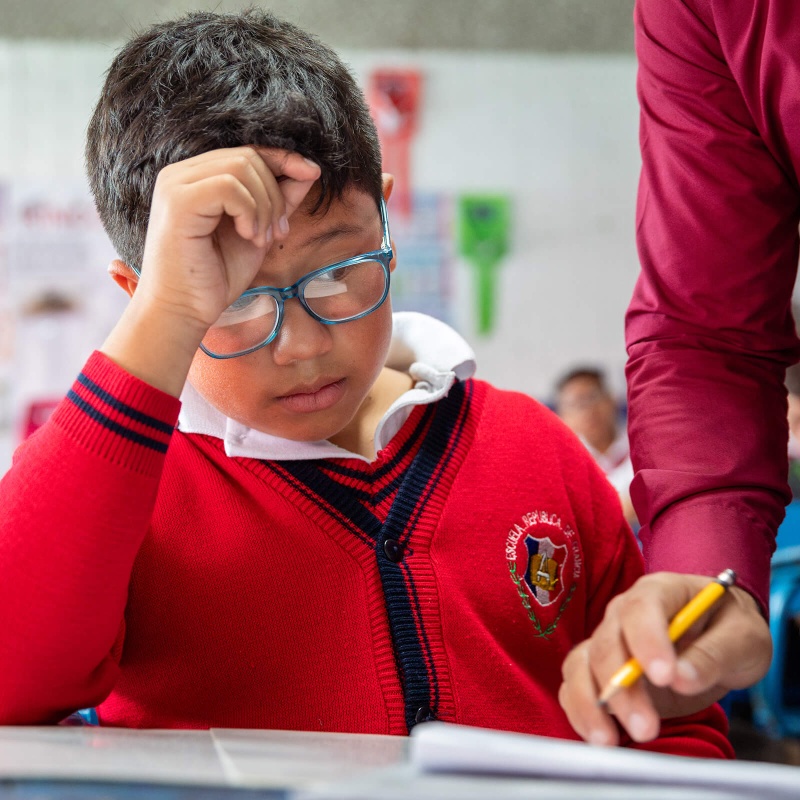Tajikistan: Better teaching methods equip children for the future

Story highlights:
- The competency-based education (CBE) curriculum has been implemented in Tajikistan since 2015.
- The vision of the reform is to transition to a holistic, student-centered approach to education that fosters students’ development of improved cognitive skills and 21st-century content knowledge.
- GPE is contributing to the implementation of CBE in Tajikistan by supporting the government and partners to undertake transformational changes that embed this reform within the education system.


“Thanks to competency-based education, the knowledge of our students at School 51 has been increasing significantly, and we're now on par with national standards.”
School 51 is located in the city of Kulob, nearly 4 hours from Dushanbe, Tajikistan’s capital. Odinaeva Savbati, a teacher at the school, feels excited about competency-based education and how it has helped improve students’ academic performance.
She shares an example that is typical of the CBE approach: students are divided into small groups and encouraged to support each other to complete an activity. If some of these students have better knowledge or aptitude for the task, they are asked to explain it to the rest of the students, simulating how children often teach each other during play.
Learning becomes an interactive activity for the entire group and helps bring those students who need guidance to the level of other students. The class doesn’t follow the traditional teaching method—where the teacher speaks and students simply listen—and students are much more engaged and play a central role without even realizing it. Their involvement leads to a better dynamic for learning.
Odinaeva has been a teacher for 36 years—a job she had dreamed about since she was a young girl, when her heroes were her own teachers. Today, she teaches through the CBE curriculum that Tajikistan has been implementing since 2015. Odinaeva was trained in CBE in 2016, and her teaching methods have changed significantly since then.
How is competency-based education different, and why does it matter?

“Through CBE, students do not just memorize; it teaches them to think for themselves. The difference between CBE and the traditional method of teaching is the students were more passive in the latter approach. The only people who were active in the classroom were the teachers. But through CBE pedagogy, students are at the center of the learning process.”
Unlike traditional methods, CBE is student centered. Through the CBE approach, Odinaeva is able to address students’ different learning needs, personalizing their experience. For example, Odinaeva may divide students into groups according to their competency level and give them individualized tasks with the goal of bringing everyone to the same level.

“We give homework based on where each student stands. The homework is not different per se, it’s the level of difficulty that differs.”
Through CBE pedagogy, students are active participants in their own learning. For example, Odinaeva often asks students to get into pairs, with one student transcribing a text read by another student. They then check the text and switch roles. By learning from each other, under the guidance of the teacher, students learn more efficiently.

“With the traditional method, students were more reserved and afraid of making mistakes. With the CBE method, when students make a mistake, the teachers try to explain it to them in a positive way, without scolding. This means that the children do not feel scared and are more comfortable to express themselves.”
CBE is helping School 51 improve the quality of education students receive while also increasing their motivation to learn. This school gives us a glimpse into a future in which Tajikistan moves away from traditional learning to an approach that provides students with the skills they need to succeed in life.
Unpacking lessons learned
Not all schools implementing the reform have been as successful as School 51, however. A 2021 report found that more resources and coordinated efforts are needed to ensure CBE is fully integrated into the education system. Key challenges include the lack of a clear vision for CBE at the national level, lack of coherence between different competency-based frameworks, and fragmented prioritization of some of the components of the reform.
In 2022, GPE supported Tajikistan in the development of a partnership compact which highlights the resolve of the government and partners to achieve system-wide changes to fully integrate CBE and have a significant impact on learning. The compact aimed to assess, identify and agree on the system transformation priorities as well as align partners and resources behind the selected reforms. The compact also demonstrated the need for Tajikistan to move away from a “business-as-usual” approach if the country is to successfully integrate CBE.
The way forward
GPE stands ready to support the government of Tajikistan and development partners to build a joint vision for CBE and establish strong coordination mechanisms to implement and monitor the reform.
GPE will be providing over US$25 million to support the comprehensive rollout of CBE in the country. This will include supporting the development of a detailed national roadmap for implementing CBE; the establishment of a competency-based teacher continuous professional development system; and the development of a clear curriculum for each competency as well as CBE content.
GPE funding will support improving school connectivity, equipping computer classrooms and learning laboratories in selected schools to enable the rollout of blended learning and with a strong focus on STEM subjects.
GPE will also continue to play a key role in convening partners, including civil society; facilitating alignment of donor support through regular joint sector review; and supporting monitoring of the compact implementation.
The national implementation of the CBE reform is ambitious and will require strong and inclusive coordination, funding priorities that are firmly grounded in rigorous assessments and national priorities, and the leadership of the government of Tajikistan.
GPE is committed to contributing to supporting the country to undertake transformational changes that embed this reform within the education system.






